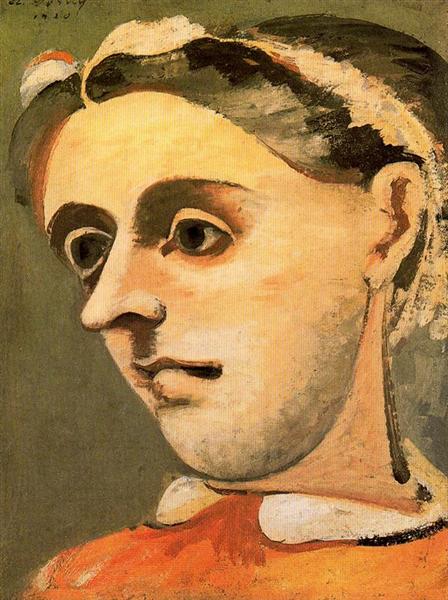Description
The work "Portrait of Akabi" by the Armenian-American artist Arshile Gorky, painted in 1936, is a fascinating example of the style that Gorky cultivated and has been considered a precursor to abstract expressionism. This portrait is presented as an introspective and emotional study, where the central figure, which is probably a representation of a person who Gorky considered significant in his life, is captured in a visual dialogue with the viewer.
The composition of the work is characterized by a central arrangement of the character, who occupies a predominant space and seems to emerge from an abstract and colorful background. The use of space is fundamental in Gorky's painting: the figure is not only a static object, but seems to interact with the environment, creating a tension between the shape and the background. This relationship between the figure and the background color suggests a reflection on the identity, memory and emotions that Gorky tried to express, recurring issues in his work.
The color plays a crucial role in the "Akabi portrait." Gatchy uses a rich and exuberant palette, where the terracotta, blue and green tones are intertwined almost viscerally. The color application is loose and fluid, which brings to the portrait a dynamic character. The colors not only delineate the figure; They also intertwine with the abstract forms of the background, creating an atmosphere of vibrant energy that seems to press and breathe. This descriptive characteristic of color is reflected in Gorky's desire to capture not only external appearance, but also the subject's internal essence.
As for the figure represented, facial features are suggested more than completely defined, which helps evoke a feeling of mystery and ambiguity. The lack of a completely realistic representation is inscribed in Gorky's modernist approach, who, like other artists of his time, explored new borders in the representation of the human being. In this sense, the portrait does not seek to be a simple visual document; Instead, it becomes a vehicle to explore the subjectivity and emotional experience of the portrait.
Arshile Gorky, influenced by movements such as surrealism and cubism, develops in this work a form of visual language that dilutes the limits between figurative representation and abstraction, achieving a continuous dialogue between them. His work has been highlighted for his ability to merge the personal and the universal, a feature that becomes evident in the "portrait of Akabi", where the artist's desire to connect with the viewer through a shared emotional experience is felt.
In conclusion, "Portrait of Akabi" is a powerful representation not only of an individual figure, but of the search for Gatchy for understanding and expressing his own identity through painting. The combination of its compositional approach, its use of color and exploration of the form allow this portrait to transcend its immediate context, inviting the observer to a deeper reflection on individuality and emotion. The work is not simply a portrait, but a melting pot of feelings, colors and shapes that reflects the complexity of human experience, characteristics that have assured their place in the history of modern art.
KUADROS ©, a famous paint on your wall.
Hand-made oil painting reproductions, with the quality of professional artists and the distinctive seal of KUADROS ©.
Art reproduction service with satisfaction guarantee. If you are not completely satisfied with the replica of your painting, we refund your money 100%.

